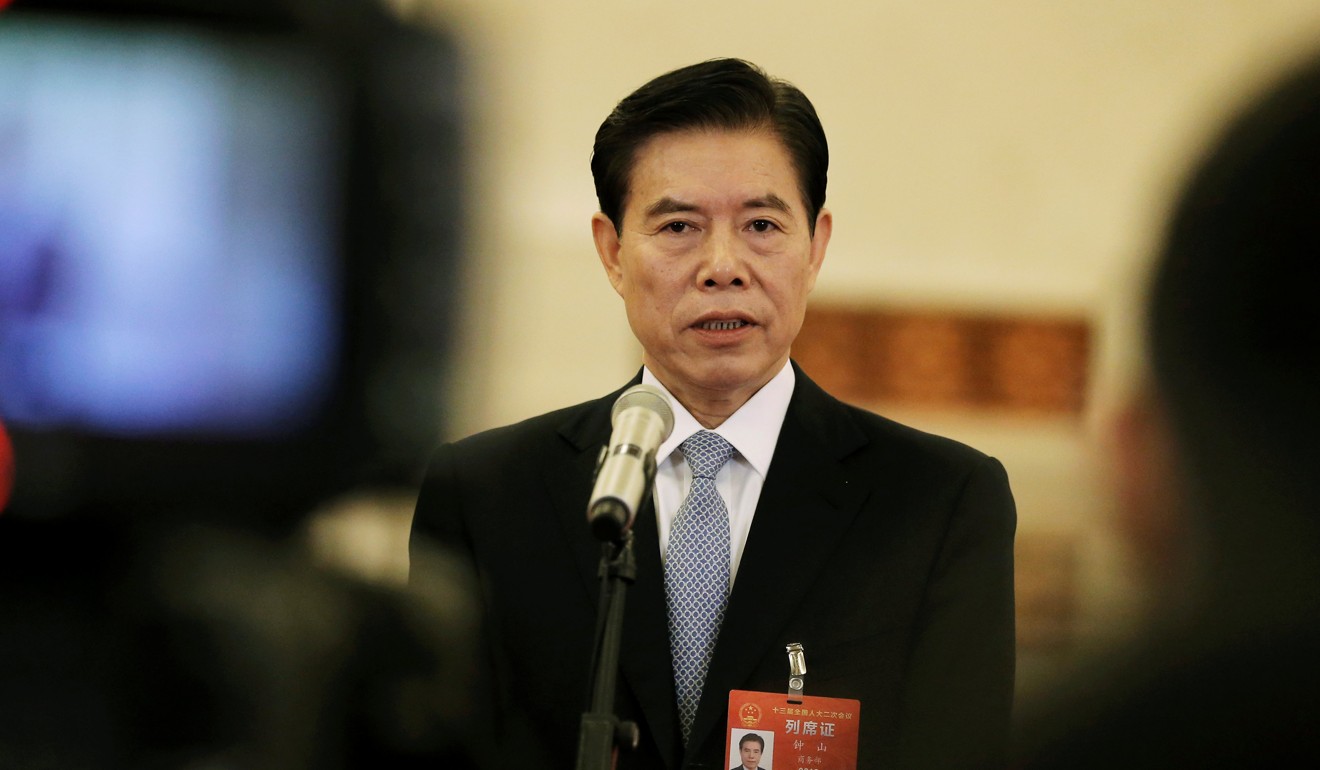
China, US said to be wrangling over text before trade talks can resume
- Washington wants to use longer document with earlier concessions from Beijing, but China wants its demands included, according to observers
- Analysts say negotiations will be tough once they get going again, and a lack of trust will make it difficult to reach a deal
China and the United States remain divided over which negotiating text to base their revived trade talks on, with Washington demanding a longer document be used that lists earlier promises made by Beijing, according to observers.
Beijing and Washington had gone through 11 rounds of negotiations for a trade deal when talks collapsed on May 10. The US accused China of backtracking on its previous commitments, while Beijing accused Washington of making too many demands.
What corporate earnings will tell investors about the trade war
It is not known when negotiators from the two sides will next meet in person.
Wang Yong, an international relations professor at Peking University, said Beijing and Washington were in the process of trying to nail down the details in preparation for talks to resume.
“The US wants China to get back to the text of the deal that had been discussed prior to their 10th round of talks on April 30, while China has asked the US to consider its demands as well, to make it more equal,” Wang said.

That document was reportedly 150 pages long and listed concessions Washington said Beijing had made. But soon after the talks in May, the US accused China of reneging on its promises and negotiations were suspended.
Wang said Washington needed to respond to Beijing’s concerns over its exports to and investment in the US, the supply ban against Chinese telecoms giant Huawei Technologies and visa restrictions on academics.
Tensions over trade and technology ‘persistent’, could last for years, BlackRock says
China did not confirm the latest phone discussion until Friday, saying only that both sides had exchanged views on how to implement the agreement from the Xi-Trump meeting and the “next step” in negotiations, according to state media.
But the late confirmation from Beijing and lack of details from both sides suggested there could be limited progress on the thorny issues involved in getting the talks going again.
Chinese foreign ministry spokesman Geng Shuang called for the two sides to try to overcome their differences. “I would still like to say that both sides must remain determined, have confidence and perseverance, and work together on the basis of equality and mutual respect to achieve a mutually beneficial agreement,” he said.
Shi Yinhong, an international relations professor at Renmin University of China, said the Osaka summit “at best” created an opportunity for the two sides to restart talks, but it would be tough to reach a deal.
“The US administration has kept saying China should go back to the point at which it backtracked, but it hasn’t yet shown any sign that it might reconsider Beijing’s requests,” Shi said, referring to China’s “bottom lines” revealed by Liu after the talks collapsed.
The US is applying as much pressure as it possibly can on China – over the South China Sea, Taiwan, Xinjiang and Hong Kong
“My guess is that maybe the central government thinks the current conditions are not right to restart negotiations. Once they’ve resumed, the talks will be tough, and there are some things China just cannot accept,” Shi said.
Wang said that if they could reach a trade deal, it may bring huge benefits to both China and the US, but there was the risk of it becoming a zero-sum game.
“There is a lack of strategic trust from both sides. China is getting more suspicious about Washington’s intentions. And the US is applying as much pressure as it possibly can on China – over the South China Sea, Taiwan, Xinjiang and Hong Kong,” Wang said. “With less and less bilateral trust, it will be difficult to reach a deal.”
Additional reporting by Catherine Wong

